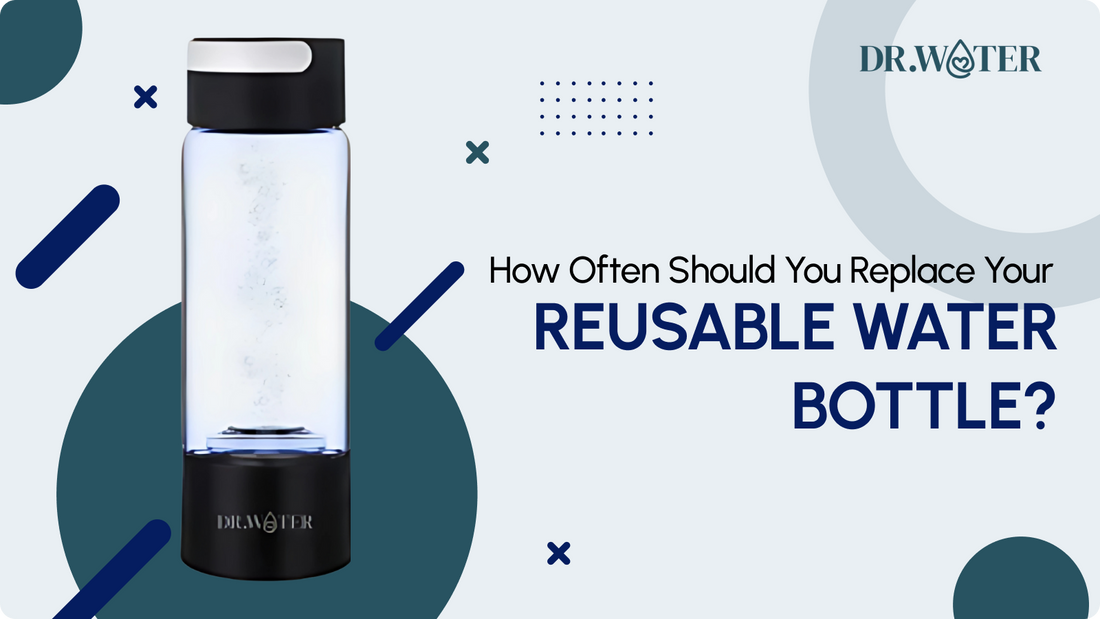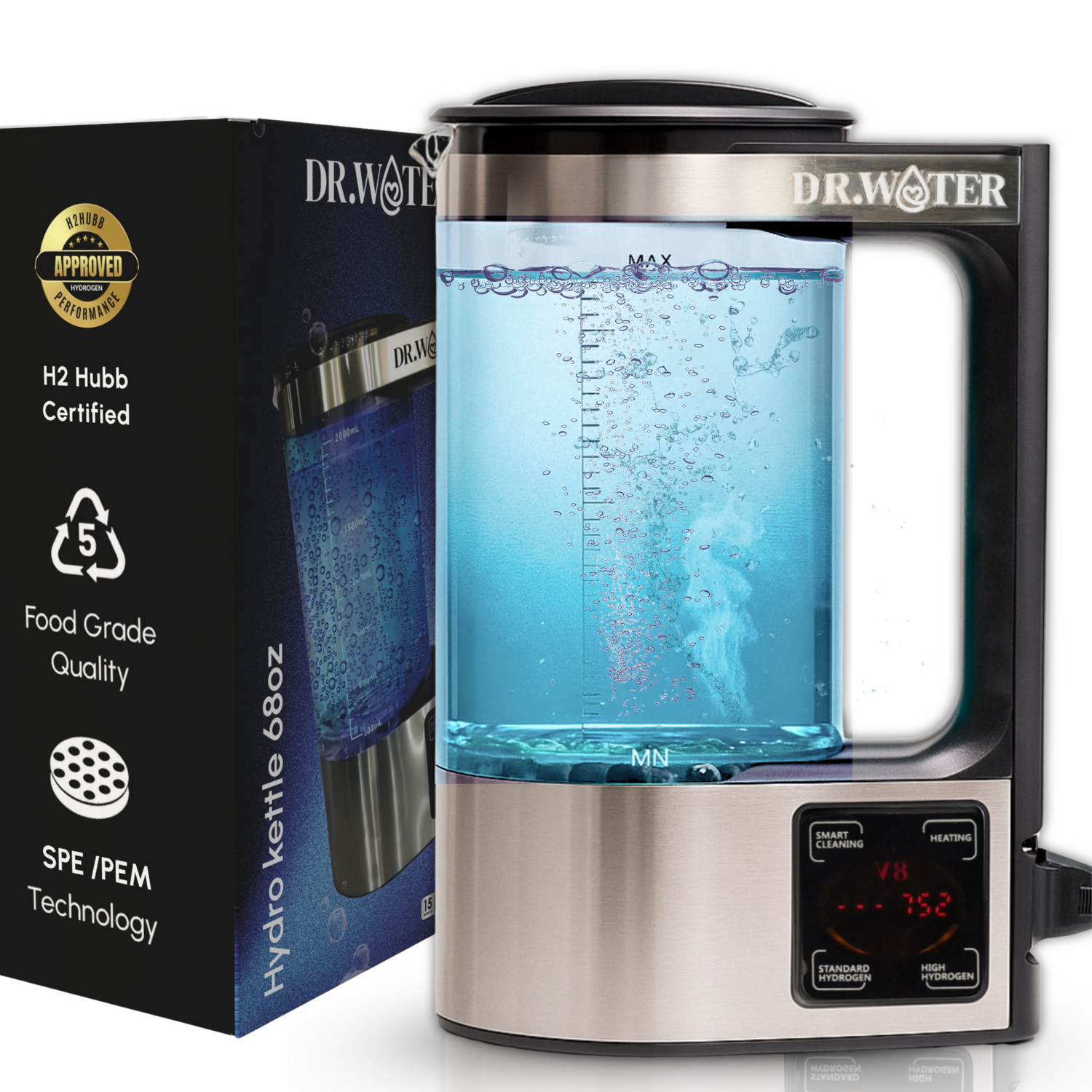
How Often Should You Replace Your Reusable Water Bottle?
Share
Key Takeaways
|
Your reusable water bottle goes everywhere with you, from morning workouts to late-night study sessions. In fact, about 60% of US adults have adopted reusable bottles as part of their daily routine.
But here's something most people don't think about: these bottles don't last forever. Even the toughest materials break down over time, and when they do, it can affect more than just your hydration routine.
This guide takes a closer look at why replacing your reusable water bottle matters for both your health and peace of mind.
Why Replacing Your Reusable Water Bottle Is Important?

Your water bottle may seem durable, but ongoing exposure to heat, daily use, and repeated washes gradually reduce its safety and effectiveness. What looks fine on the outside can still hide internal wear that impacts water quality and hygiene.
Here are some concerns that show why timely replacement matters:
- Lingering smell or odd taste: If odors or tastes linger after cleaning, bacteria may have settled into tiny scratches or seals. These hidden spots are hard to clean and can affect your health.
- Fine cracks or surface wear: Plastic and coated metals can develop microcracks you can’t always see. They trap moisture and bacteria, weaken structure, and sometimes cause leaching from damaged coatings.
- Microplastic release: Plastic bottles exposed to sunlight or heat can start shedding microplastics over time, especially if reused often. That’s a red flag for replacement.
- Rust or corrosion: Metallic taste or rust spots signal internal wear, often from trapped moisture or acidic drinks. Once that happens, metal particles can mix with water, which means the bottle’s done.
Also Read: Alternatives to Bottled Water That Solve Specific Daily Problems
Understanding the signs of wear is essential. Now, let’s discuss how often replacement should actually occur.
How Often Should You Replace Your Reusable Water Bottle?
Most people use the same bottle until it breaks or gets lost. But waiting that long isn't always smart. The general rule? Plan to replace your reusable bottle every 1 to 2 years. That said, this timeline shifts based on what your bottle is made from and how hard you use it.
Heavier use (frequent refills, dishwashing, tossing a gym bag) leans toward the shorter end of that range. Gentler care may extend it. And of course, the material matters. Some types wear out faster than others. Let’s break that down next.
Replacement Timeline for Different Reusable Bottle Materials
Every material ages differently. How long your bottle lasts depends on what it’s made of and how it’s used. Here’s what to expect from different types, and how to know when it’s time for a replacement.

1. Plastic Bottles (BPA-Free)
Plastic bottles are convenient but tend to wear faster than metal or glass. Frequent dishwashing, sunlight, and rough handling shorten their life.
- Average lifespan: 6 months to 1 year (Tritan plastic can last 1–3 years)
- Things to notice: Cloudiness, sticky feel, or persistent odors
2. Aluminum Bottles with Liner
Aluminum bottles are lightweight, but their protective liner can wear down over time. This affects taste and safety.
- Average lifespan: 2-4 years
- Things to notice: Peeling liner, metallic taste, or internal discoloration
3. Stainless Steel Bottles
Durable and resistant to most damage, stainless steel still ages with dents or corrosion. Care impacts how long it stays safe.
- Average lifespan: 3-5 years
- Things to notice: Rust spots, metallic taste, or flaking inside
4. Glass Bottles
Glass is the most durable in terms of purity, but it’s fragile and needs careful handling. Even minor chips or cracks make replacement necessary.
- Average lifespan: 4-6 years (longer if intact)
- Things to notice: Chips, cracks, or worn seals
To make it easier to compare, here’s a clear overview of how long different reusable bottle materials typically last and what signs show it’s time to replace them:

Also Read: Understanding the Reasons and Benefits of Using Reusable Water Bottles
Now, let’s discuss some of the signs that can tell you it’s time for a replacement.
General Signs It’s Time to Replace Your Reusable Water Bottle
Even with regular cleaning, your bottle may reach the end of its lifespan. Some signs apply across all materials and can indicate it's time to consider a new one:
- A lingering odor that doesn’t go away after cleaning
- Leaks or loose-fitting lids that affect usability
- Interior buildup that’s hard to clean or won’t come off
- A drop in insulation performance (for thermal bottles)
Here’s the good news: with the right care, you can delay these issues and extend your bottle’s usable life. Let’s look at a few simple habits that help keep your reusable water bottle in top shape.
Tips to Make Your Reusable Bottle Last Longer
A reusable bottle is something you rely on daily. A little routine care can go a long way in keeping it functional, clean, and safe to use over time. Rather than waiting for signs of wear, it’s smarter to build habits that help prevent them in the first place.
Here’s how to keep your bottle in great condition for a longer period:
- Wash it daily with warm, soapy water and let it air dry completely
- Do a deeper clean once a week using a baking soda or vinegar solution
- Skip the microwave or freezer unless the bottle specifically says it’s safe
- Store it with the lid off to avoid trapped moisture and mold
- Use a bottle brush to clean around the neck and hard-to-reach spots
Also Read: Everything You Need To Know About Hydrogen Water Bottle
Even with careful maintenance, every reusable bottle eventually reaches its limit. For a long-lasting, cleaner, and more effective hydration experience, consider upgrading to a bottle designed to go further.
A Reusable Upgrade: Meet the Dr.Water Hydrator Pro

After learning how to care for your reusable bottle and spotting signs of wear, it makes sense to consider a bottle designed to stay cleaner, safer, and more effective over time.
The Dr. Water Hydrator Pro is a premium reusable hydrogen water bottle that goes beyond ordinary hydration, delivering antioxidant-rich water and long-lasting durability.
Key Features at a Glance:
- Reusable & Durable: Food-grade Makrolon and military-grade aluminum oxide ensure long-term use without wear or leaks.
- Hydrogen-Rich Water: Converts ordinary water into antioxidant-packed hydrogen water in minutes.
- Compact & Rechargeable: 9.5 oz capacity with built-in 2200 mAh battery; perfect for workouts, office, or travel.
- Easy to Use: 5- or 10-minute operation modes, LCD display, and SPE/PEM N117 membrane technology.
- Peace of Mind: 3-year extended warranty, 45-day money-back guarantee, and third-party certification for quality.
By choosing the Hydrator Pro, you’re upgrading your daily hydration routine with a bottle that’s reusable, high-performing, and designed for real-life use.
Conclusion
Choosing the right reusable water bottle is about maintaining clean, safe hydration every day. Awareness of wear, material differences, and proper care can help you make informed decisions about when to replace your bottle.
For those looking to elevate their hydration experience, options like the Dr.Water Hydrator Pro offer a thoughtful combination of durability, safety, and added wellness benefits.
Shop Dr. Water Hydrator Pro today for a longer-lasting, safer reusable bottle.
Frequently Asked Questions
Q: How does frequent use impact a reusable bottle’s seal?
A: Frequent use, especially with hot liquids or vigorous shaking, can wear out the sealing mechanism of reusable bottles, leading to leaks. Replacing the bottle when the seal begins to lose its integrity ensures it maintains its functionality and prevents spills.
Q: Do bottles with built-in filters need earlier replacement?
A: Yes, bottles with built-in filters need to be replaced more often due to filter degradation. Over time, the filter loses its effectiveness in purifying water, requiring replacement every 3-6 months, depending on usage and water quality.
Q: How do sunlight and heat affect reusable water bottles’ lifespan?
A: Prolonged exposure to sunlight or heat can degrade the material of reusable water bottles, especially if made from plastic. This can lead to cracks, discoloration, and the potential leaching of harmful chemicals.

